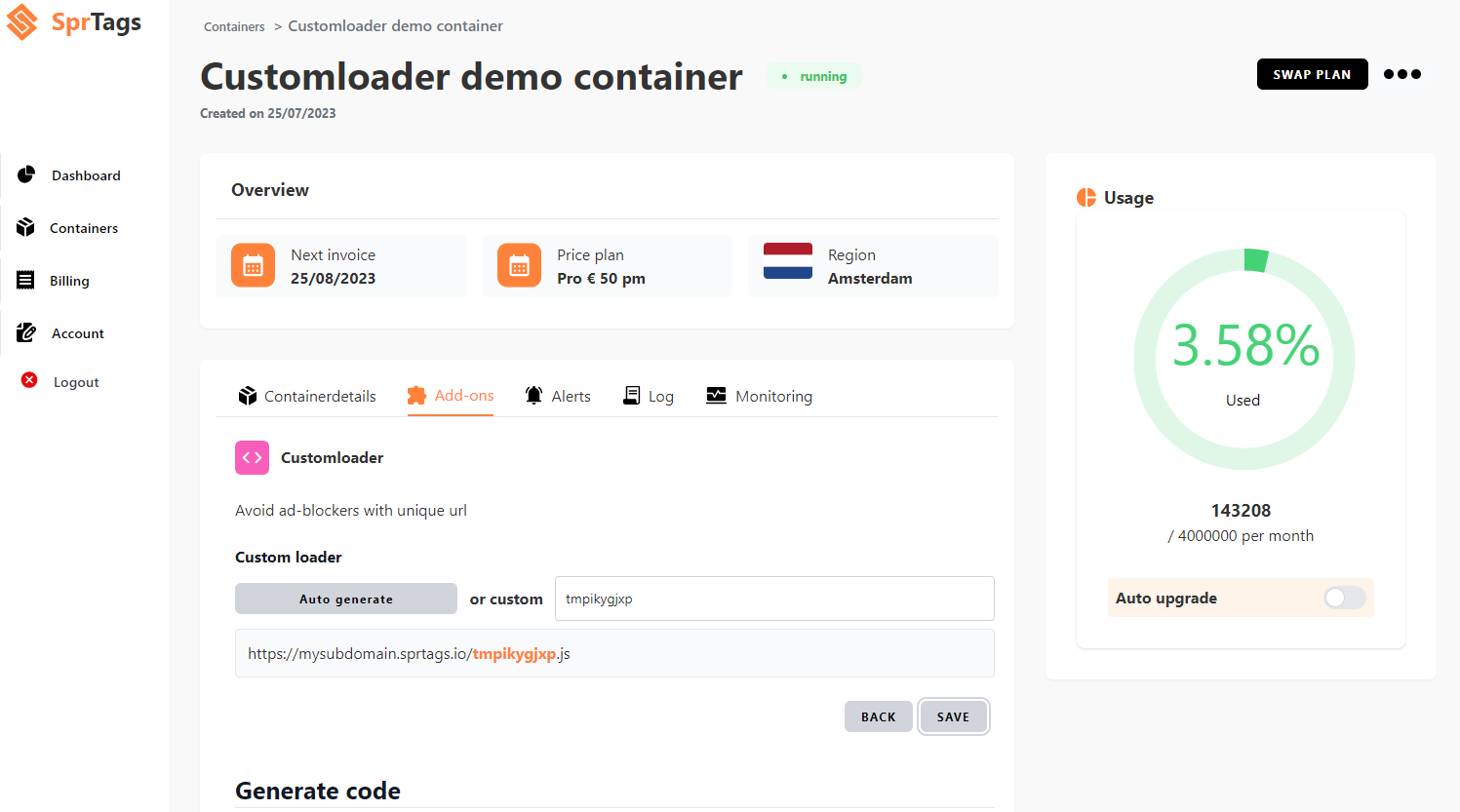Customloader
Make your gtm tracking url abstract to make it undetectable for ad-blocker
Description
Custom Loader, is one of the most important add-ons to prevent data loss by ad-blockers. Whithout it the server side tracking looses great part of its utility.
The main use of the custom loader is to proxify the request that loads the GTM code and basically make it harder to be tracked by any ad-blocking tool. By proxifying you hide the true identity of the server container with a random tagging url.
In a default scenario for the server side tracking to work properly, the GTM web container must load successfully on the website. Adblockers and web browsers with tracking prevention don't allow this to happen because it can easily detect the default google urls.
These mechanisms usually rely on the request domain or the script name to block the load of the tracking code and checks commong script urls like googletagmanager.com/gtm.js.

That poses a great challenge when tracking your users because it can result in data loss and eventually worthless insights.
So the custom loader links your website to the server side container with the use of a random or custom script name different than gtm.js

Implementation
To enable the CustomLoader add-on, go to your container on sprtags.io > Add-ons > Customloader.
Generate a random string by clicking the button Auto Generate or specify your own and click on save:

Go to your web container on Google Tag Manager and copy your container ID starting with GTM. In this demo we use GTM-TSXZ97R8.
Visit the CustomLoader add-on page and paste the GTM id of your web container on the generate code section, then copy the GTM code and replace the one of your website: Note: the gtm code script in the textarea will automatically change with the provided information, so you dont need to manually change the gtm code. You only need to copy the code

The first code goes after the opening of the <head> tag and the second one just after the opening of the <body> tag in your website.